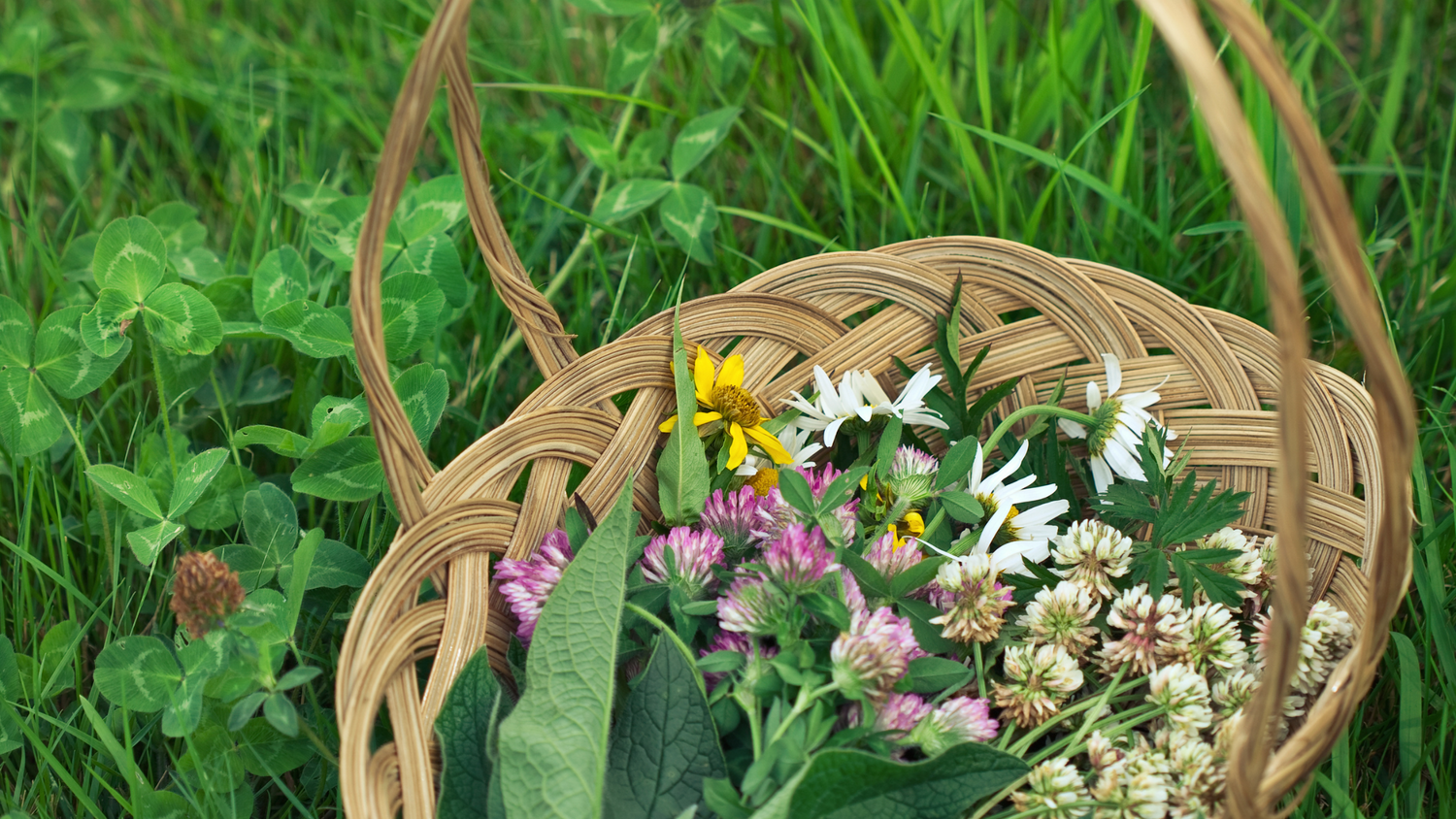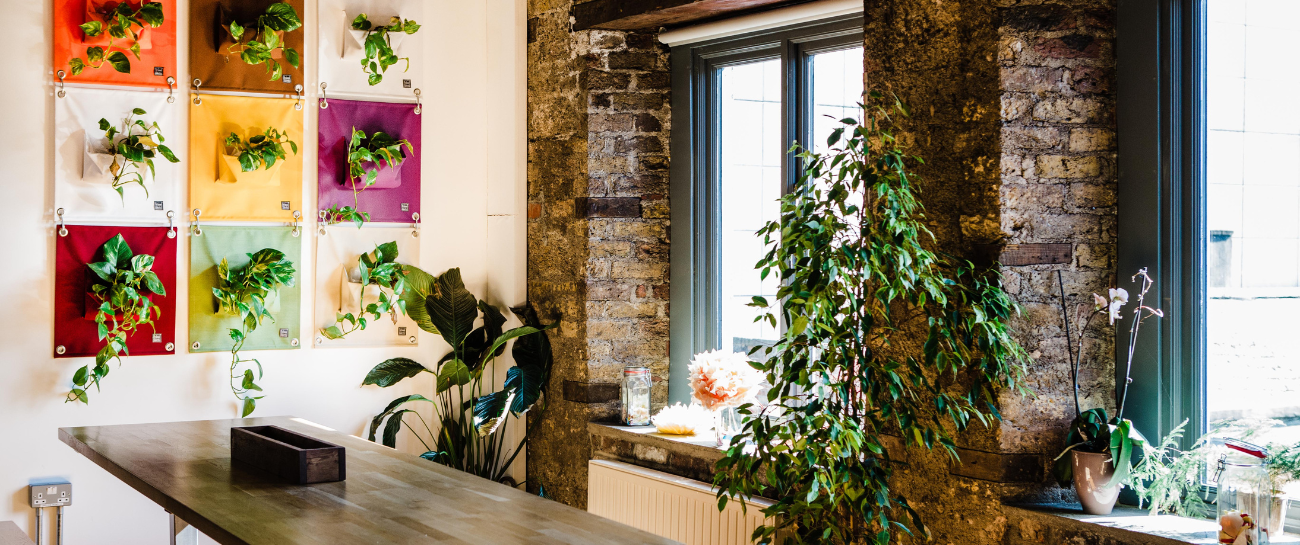At Plant Store Ireland, we believe connecting with nature goes beyond just the beautiful indoor plants that brighten our homes. It's about embracing all the natural wonders Ireland offers, both indoors and out. That’s why we’re excited to explore a topic that resonates deeply with our love for all things green— foraging in Ireland during the late summer and early autumn.
When we think of Ireland’s natural beauty, rolling green hills and majestic coastal cliffs often come to mind, but there’s another side of Ireland that offers a different kind of magic—the incredible abundance of wild foods right at our feet. Foraging in Ireland during the late summer and early autumn is not only a fantastic way to connect with nature, but it's also an opportunity to harvest delicious treats that are both free and incredibly good for you!
As we move into August and September, Ireland’s hedgerows, fields, and woodlands come alive with edible treasures just waiting to be discovered. Whether you’re new to foraging or a seasoned wild-food hunter, this time of year is perfect for getting outside, picking berries, and discovering what nature has to offer.
Why foraging is so popular in Ireland
Foraging is about more than just finding free food. It’s a way to slow down, appreciate nature, and reconnect with ancient traditions. Our ancestors lived in tune with the land, gathering wild fruits, herbs, and roots for medicine and sustenance. Today, foraging allows us to tap into that heritage, fostering a deep connection to the earth and the seasons.
It’s also an eco-friendly activity that helps reduce food waste and carbon footprints. Plus, wild foods are packed with nutrients and often contain more vitamins and minerals than their supermarket counterparts.
And let’s be honest—there’s something so satisfying about bringing home a basket of berries or wild herbs that you’ve picked yourself!
What can you forage in Ireland during Autumn?
Ireland’s mild, temperate climate means plenty of delicious plants and berries can be found throughout the year, but August and September are prime foraging months. Here are some of the top finds you can look forward to during this late summer/autumn period:

Blackberries
Ah, the humble blackberry. These juicy gems are everywhere in Ireland this time of year, growing along hedgerows and country lanes. Blackberries are delicious and packed with antioxidants and vitamin C, making them a perfect addition to your morning porridge, smoothie, or an irresistible homemade crumble.
🔎 Where to find them: Nearly everywhere! Just wander down a country road or explore the edges of a forest, and you’ll likely stumble across a few brambles.
Elderberries
Elderberries are another late-summer favourite. While you might need to be cautious when foraging these (raw elderberries can be toxic), they’re fantastic when cooked. You can make elderberry syrup, which is great for warding off colds, or add it to jams and pies for a rich, tart flavour.
🔎 Where to find them: Look for elderberry bushes in woodland areas or on the edges of fields. The clusters of deep purple berries are easy to spot once you know what you’re looking for.
Rosehips
Rosehips are bright red or orange fruits that develop on wild rose bushes after the flowers have fallen. They’re a bit of an unsung hero in the foraging world, but they’re loaded with vitamin C. You can make rosehip syrup and jam or even use them in teas to boost your immune system as the cooler weather sets in.
🔎 Where to find them: Wild rose bushes can be found in hedgerows, along coastal paths, and sometimes even in parks.

Wild Garlic
While more common in spring, you can still find patches of wild garlic lingering in shady areas as late as early autumn. It’s easily recognisable by its broad green leaves and pungent garlicky aroma. You can use the leaves, flowers, and bulbs in pestos, soups, or salads.
🔎 Where to find them: Damp woodlands are your best bet. Once you smell it, you’ll know you’re close!
Hazelnuts
August and September are the perfect months to gather hazelnuts. You’ll find these little treasures hanging in clusters from hazel trees. Freshly picked hazelnuts can be eaten raw, though they’re even better roasted or used in baking. They’re packed with healthy fats and are a great energy source for those cooler days.
🔎 Where to find them: Hazel trees are common in woodlands, so keep an eye out for their distinctive round leaves and clusters of nuts.
Sloes
These little blue-black fruits are from the blackthorn tree and are incredibly tart, so they’re not ideal for eating straight off the bush. However, they’re perfect for making sloe gin—a favourite Irish wintertime tipple! Sloe gin is easy to make and a fun way to preserve your foraged goodies for later in the year.
🔎 Where to find them: Look for blackthorn bushes in hedgerows and along field boundaries.
Foraging tips for beginners
If you’re new to foraging, the idea of picking wild plants might seem a bit intimidating. Don’t worry, though! Here are some simple tips to help you get started:
- Know what you’re picking – Always make sure you can positively identify what you’re foraging. Some plants can be toxic, so if in doubt, leave it out! A good foraging guidebook or app is a handy resource.
- Respect the environment – Only take what you need, and leave plenty behind for wildlife and other foragers. Avoid over-picking and be gentle with the plants.
- Bring the right tools – A sturdy basket or cloth bag is ideal for carrying your finds. Gloves can also be helpful for thorny plants like blackberries, and a small knife or scissors can come in handy for tougher stems.
- Pick away from pollutants– Avoid foraging near busy roads or areas that may be sprayed with pesticides. The cleaner the area, the better!
A simple recipe: Blackberry & Apple Crumble

Now that you’ve gathered your wild bounty, it’s time to put it to good use in the kitchen! One of the easiest and most delicious ways to enjoy your foraged blackberries is in a classic Blackberry & Apple Crumble. It’s a warm, comforting dessert perfect for those cooler September evenings.
Ingredients:
- 250g foraged blackberries
- 2 large cooking apples (preferably Bramley)
- 150g plain flour
- 100g butter (cold and cubed)
- 80g caster sugar
- 50g oats (optional, for extra crunch)
Method:
- Preheat your oven to 180°C (160°C fan).
- Peel, core, and slice the apples, then layer them in the bottom of a baking dish. Scatter the blackberries on top.
- rub the butter into the flour in a bowl until it resembles breadcrumbs. If using, stir in the sugar (and oats), then sprinkle the crumble mixture over the fruit.
- Bake for 35-40 minutes until the crumble is golden and the fruit is bubbling.
- Serve warm with cream, custard, or ice cream. Bliss!
For more wild-inspired recipes, check out this fantastic [Irish cooking blog](https://www.foragerchef.com). It’s full of seasonal recipes and foraging tips to inspire you all year round.
Foraging is a fun, rewarding way to explore Ireland’s beautiful landscapes, connect with nature, and enjoy some delicious wild foods. Whether picking blackberries for a crumble or gathering elderberries for syrup, there’s something deeply satisfying about bringing home a taste of the wild.
So why not grab a basket, pull on your wellies, and head out for a late-summer adventure? The hedgerows are calling!





